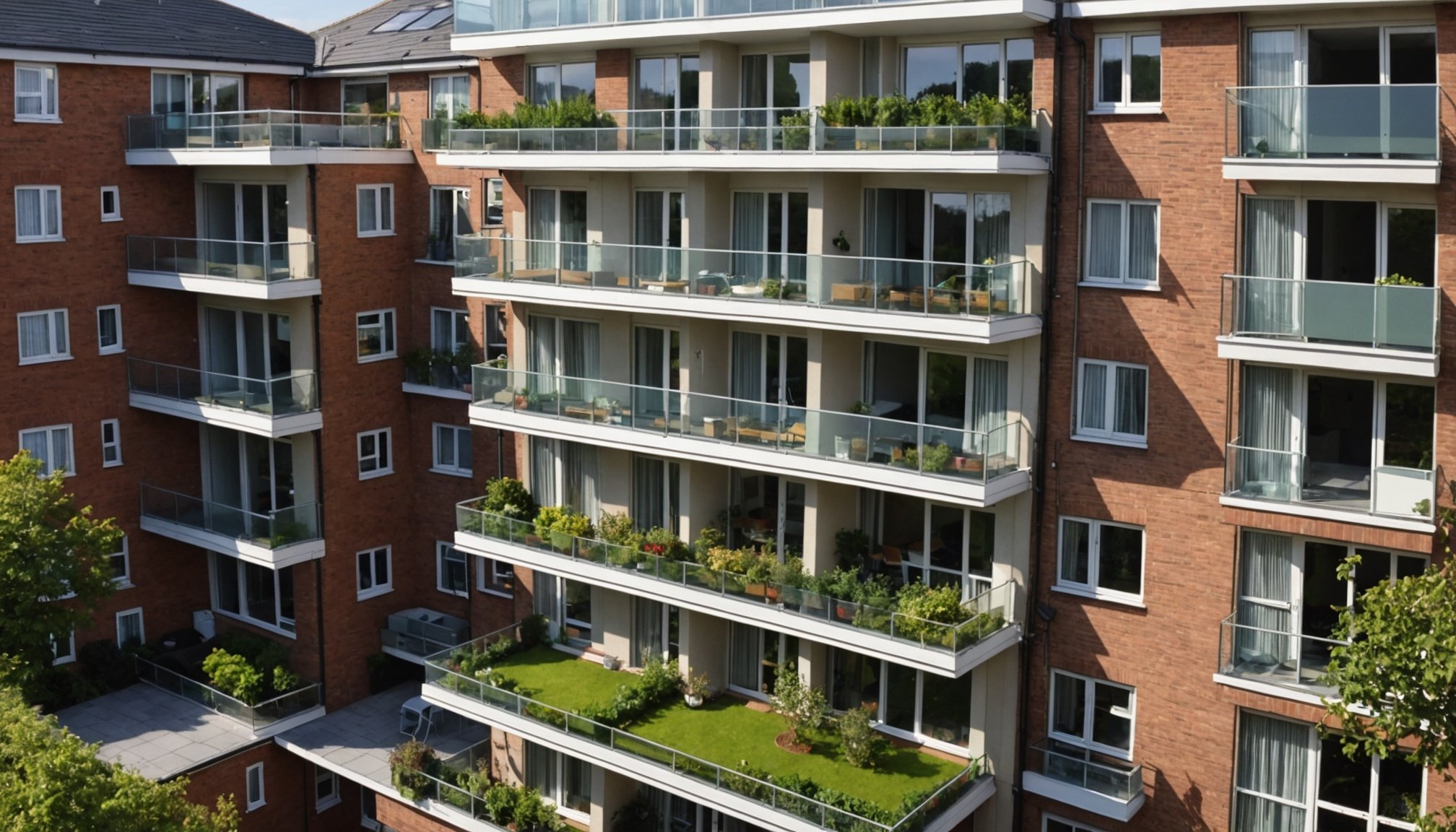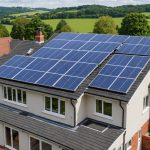Balconies often serve as overlooked spaces in urban apartments, yet they hold immense potential for renewable energy solutions. With rising energy costs and growing environmental concerns, UK residents can transform these small outdoor areas into power-generating hubs. From solar panels to vertical gardens integrated with wind turbines, innovative technologies can enhance energy efficiency while beautifying balconies. Discover how to optimize this space for sustainability and energy independence, making a lasting impact on both your wallet and the environment.
Overview of Renewable Energy Solutions for Balconies
Incorporating renewable energy into balcony spaces offers a promising avenue for apartment residents seeking sustainable living. Renewable energy solutions, such as solar panels and wind turbines, are specifically designed to harness natural resources and convert them into electricity. These solutions are particularly advantageous for urban dwellers with limited space, offering a practical way to reduce reliance on traditional power sources.
A lire aussi : Smart Choices: Finding the Perfect Laundry Machines for a Family of Four in the UK
Balconies, often underutilized, hold significant potential for energy generation. Installing solar panels on a balcony can capture sunlight efficiently, even in small areas, providing a renewable energy source that can power various household appliances. Similarly, compact wind turbines can be mounted to capture wind energy, turning even a gentle breeze into usable electricity.
The importance of renewable energy for apartment residents cannot be overstated. It not only contributes to reducing carbon footprints but also offers potential savings on energy bills. Furthermore, as cities grow and space becomes a premium, utilizing balconies for renewable energy solutions becomes an innovative way to contribute to a greener future. By embracing these technologies, residents can transform their balconies into mini power stations, promoting sustainability right from their homes.
Lire également : Top Low-Flow Showerheads for Water Efficiency in UK Apartments: The Ultimate Guide to Eco-Friendly Showers
Solar Panel Options for Balconies
When considering solar panels for balconies, it's essential to explore the various types available. Solar energy can be harnessed effectively with panels designed for small spaces.
Types of Solar Panels Suitable for Balconies
There are several solar panel options ideal for balcony use. Monocrystalline panels offer high efficiency and are perfect for limited space, while polycrystalline panels are more affordable, albeit slightly less efficient. Thin-film panels are lightweight and flexible, making them easier to install on balconies with unusual shapes or limited load-bearing capacity.
Installation Guidelines for Balcony Solar Panels
Installing solar panels on a balcony requires careful planning. Ensure the balcony receives ample sunlight throughout the day. Panels should be mounted securely, considering wind load and structural integrity. Use adjustable mounts to optimise the angle for maximum sunlight exposure. It's advisable to consult with a professional installer to adhere to safety regulations and local building codes.
Cost and ROI Analysis
The initial investment in portable solar solutions for balconies can vary. Monocrystalline panels tend to be more expensive but offer a better return on investment due to their efficiency. Polycrystalline panels provide a budget-friendly option with a moderate ROI. Over time, savings on energy bills can offset installation costs, making balcony solar panels a financially viable choice.
Wind Energy Solutions for Apartment Balconies
Integrating wind turbines for apartments provides an innovative approach to harnessing small wind energy in urban settings. These compact turbines are designed to fit limited spaces, making them ideal for balcony wind solutions. They convert wind into electricity, offering a sustainable power source for apartment dwellers.
Overview of Small Wind Turbines
Small wind turbines are engineered to operate efficiently in low-wind conditions typical of urban environments. They often feature vertical-axis designs, which are less obstructive and quieter than traditional models. These turbines can generate sufficient power to support small household appliances, contributing to a reduced carbon footprint.
Installation Considerations
When installing wind energy systems on balconies, several factors must be considered. Ensure the balcony can structurally support the turbine's weight and movement. It's crucial to assess local wind patterns to determine optimal placement. Additionally, securing necessary permits and adhering to building regulations is essential to avoid legal issues.
Benefits and Limitations
The benefits of balcony wind solutions include reduced energy bills and increased energy independence. However, limitations exist, such as noise concerns and variable wind availability. Despite these challenges, small wind energy remains a viable option for those committed to sustainable living.
Case Studies of Successful Balcony Energy Implementations
Exploring renewable energy case studies offers valuable insights into the practical application of balcony projects. In the UK, several initiatives have demonstrated the potential of balcony spaces for energy efficiency.
One notable example is a residential building in London where residents installed compact solar panels and small wind turbines on their balconies. This project resulted in a significant reduction in energy bills and a decreased carbon footprint. The integration of these technologies provided enough energy to power essential household appliances, showcasing the feasibility of balcony energy solutions.
Another inspiring case is a community-driven project in Manchester. Here, residents collaborated to implement a shared balcony energy system, combining solar and wind technologies. This initiative not only enhanced energy efficiency but also fostered a sense of community and shared responsibility for environmental impact.
From these projects, key lessons have emerged. Effective planning and collaboration are crucial for success. Ensuring structural integrity and compliance with local regulations is essential. Furthermore, these energy efficiency examples highlight the importance of adapting solutions to specific environmental conditions, maximising the potential of balcony renewable energy solutions.
Legal Considerations and Regulations for Balcony Renewable Energy
Navigating the UK regulations on renewable energy for balcony installations can be complex but is crucial for successful implementation. Understanding the legal landscape ensures compliance and maximises the benefits of renewable energy projects.
Overview of Relevant UK Regulations
In the UK, specific regulations govern the installation of renewable energy systems on balconies. These laws are designed to ensure safety, structural integrity, and environmental protection. Compliance with balcony installation laws includes adhering to building codes and ensuring the systems do not compromise the building's facade or structural stability.
Permits and Planning Permissions for Balcony Installations
Securing the necessary permits and planning permissions is a critical step for balcony renewable energy projects. Depending on the location and type of installation, residents might need to apply for planning permission. This process involves submitting detailed plans to local authorities, who assess the project's impact on the building and surrounding area.
Local Incentives and Support for Renewable Energy Projects
The UK government and local councils offer various incentives to encourage renewable energy projects. These include grants, tax rebates, and feed-in tariffs that make balcony installations more financially viable. Engaging with local energy support schemes can provide valuable resources and guidance for residents embarking on sustainable energy initiatives.
Future Trends in Balcony Renewable Energy
Exploring the future of renewable energy reveals exciting possibilities for balcony innovations. As technology advances, emerging solutions are set to revolutionise how urban dwellers harness energy. One promising development is the integration of smart solar panels that adjust their angle to maximise sunlight exposure, even in compact spaces. These panels can be paired with energy storage systems, allowing residents to store excess energy for later use.
In terms of sustainability trends, the adoption of renewable energy in urban dwellings is expected to increase significantly. Predictions suggest that as awareness grows, more apartment buildings will incorporate renewable solutions into their design. This shift not only supports environmental goals but also addresses the increasing demand for sustainable living options in densely populated areas.
Community initiatives play a crucial role in this transformation. By collaborating on shared energy projects, residents can pool resources to implement larger, more efficient systems. These initiatives foster a sense of community and shared responsibility, aligning individual efforts with broader sustainability objectives. As these trends continue to evolve, balcony innovations will become a cornerstone of urban energy solutions, paving the way for a greener future.











